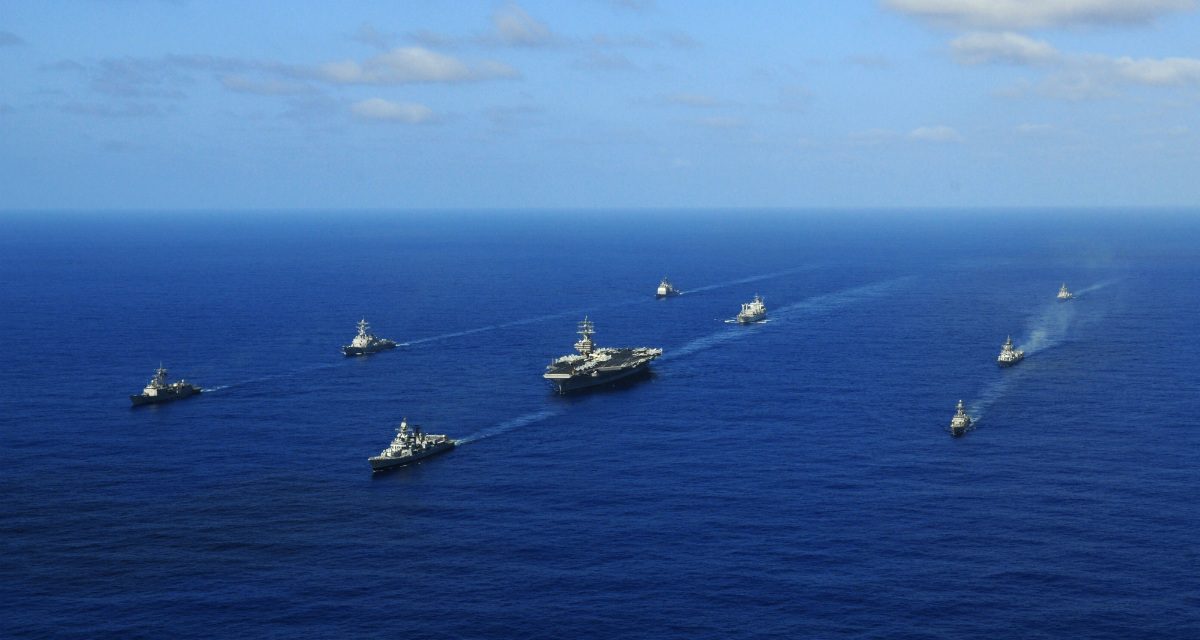To the extent that China has both actively and passively challenged international norms and sovereignty claims in its neighborhood, it represents one of the most real and persistent challenges to the status quo in the region. As the most recent US National Security Strategy enunciates, the Pacific Rim is not the only area of importance within Asia; rather, the strategy encompasses the entire Indo-Pacific region. The areas linking the Pacific Ocean to the Indian Ocean—including the South China Sea, Malacca Straits, and Andaman and Nicobar Islands—are of vital strategic importance to all the major regional players, as more than a quarter of all global trade and energy transportation passes through these waterways. The United States, China, and India are all beholden to each other to the extent that each exerts a distinct influence over these routes. For this reason, China’s effective annexation of parts on the South China Sea is particularly dangerous. The United States cannot respond to this type of threat unilaterally; and beyond Japan and South Korea, US willingness to come to the defense of its other Asian allies is viewed as questionable. In many ways, India represents a natural counterbalance in a region where China’s strength, leadership, and boldness are increasing. While US strategy does not preclude the peaceful rise of China, the South China Sea sets a dangerous precedent, and cooperation with India may provide an opportunity to discourage this type of behavior in the future. This report provides an analysis of the spaces in which the United States may find success working with India to counterbalance China’s challenge to the status quo—as well as an assessment of the potential hurdles in attempts to do so—both in general and through an examination of specific lessons from the South China Sea.



India is a "mixed bag" of skills and liabilities. The Indian armed forces may not have the logistical skill sets to maintain a confrontation with China for any length of time which means if an ally were to rely on India, at some point India will collapse under continued Chinese pressure. Few things upset plans like a "trusted ally" collapsing while they hold a key feature or choke point. Have no doubts about the bravery and courage of the Indian armed forces, but don't count too much on the Indian armed forces for more than a few months.
Agree, India is not a reliable ally. India sabotages her interests and is excellent at posturing for its local audience and Pakistan. The armed forces are antiquated managed by HR managers, not strategic generals.
– they don't have the supply chain to fight Pakistan, let alone China
– they don't have the infrastructure
– they don't have the fuel/energy
– their people are afraid of any sense of casualties
– they still pretend to maintain non-alignment to get Russian arms, which means Russian intel goes back to China.
– their systems are not compatible with the operations of our Pacific allies
– China could crush India with just a cyber attack
– India has shown that since 1962 it will only take hits and body blows and allow China to take land 1KM a time. You want an ally that is reliable and has proven skills to fight and win.
On the other hand, The USA does not need any allies; we need to recognize Taiwan, remove our recognition of Tibet, we need to focus on disrupt, destabilize, and decapitate – there is no need to fight a land war. We just need China to lose face to the local population, and you will have civil unrest. Do not let China get a foothold in space. We can covertly make this happen – oops.
As far as India goes, it will remain functioning anarchy focused on internal pomp and pageantry that produces exceptional individuals once they leave.
You wrote that Pakistan is an US ally, necessary to the fight against Al Quaeda. In another report, still from the mwi, the author wrote that the Taliban has been created by Pakistan which is also a fake ally of the US and a true ally of China!
Which one is right?
Indeed, if Pakistan play the chinese card the solution should be obvious..
Tks.